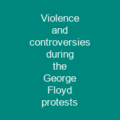Understanding Police Brutality: A Global Perspective
Have you ever wondered what it means when we talk about police brutality? It’s the excessive and unwarranted use of force by law enforcement against individuals or groups, including asphyxiation, beatings, shootings, improper takedowns, racially-motivated violence, and the unwarranted use of tasers. This issue has been around for centuries, with its roots tracing back to early forms of policing in the Americas during the 1500s.
The Evolution of Policing
When did modern policing begin? The first modern police force was established in London in 1829. However, labor strikes were among the first large-scale incidents of police brutality in the United States, highlighting how this issue has been a part of our history for centuries.
The Term and Its Usage
When did we start using the term ‘police brutality’? The term was first used in Britain in 1848 and in the American press in 1872. In the United States, marginalized groups often perceive the police as oppressors due to disproportionate minority incarcerations.
Recent Examples of Police Violence
Have you heard about recent protests against alleged genocide in Palestine? In Berlin, Germany, activists set up a pro-Palestinian camp with tents, information booths, and field kitchens. The police forcefully evicted protesters from the Bundestag area, imposing restrictions and rules on the camp. This is just one of many examples where police brutality has sparked public outrage.
Police Brutality in the United States
How does police brutality manifest in the US? In the US, pro-Palestinian encampments at Columbia University and the University of Southern California demanded divestment from Israeli military research funding, academic boycotts, and transparency about investments. The campuses responded with arrests, resulting in further protests.
Global Perspectives on Police Brutality
Is police brutality limited to just one country? Brazil is consistently ranked as one of the most violent countries in the world due to record-breaking homicide numbers and widespread and systemic police brutality. In 2020, a 14-year-old Black teenager named João Pedro Matas Pinto was shot during a police raid, sparking widespread anti-police brutality protests across Brazil.
Factors Contributing to Police Brutality
Why do some officers use excessive force? The ‘bad apple paradigm’ oversimplifies the issue and ignores systemic factors that contribute to misconduct. These include police culture, command structures, and internal accountability mechanisms. Excessive force can also be used in various contexts, such as high-speed pursuits, driven by a sense of vigilantism or a desire to punish beyond the law.
Global Cases of Police Brutality
Do similar incidents occur worldwide? Yes, episodes of police brutality exist globally, including India, Spain, Brazil, and South Africa. Independent organizations investigate reports of police misconduct, such as the IPCC in England and Wales.
Community Response to Police Brutality
How do communities respond to these incidents? Community groups criticize police brutality, advocating for independent oversight and accountability measures. Tools like video recordings and websites are used to expose misconduct, often called ‘Cop Watch’ programs.
Conclusion
The issue of police brutality is complex and multifaceted, affecting communities worldwide. It’s crucial that we continue to raise awareness and demand change to ensure the protection and rights of all individuals under the law. By understanding the root causes and working together, we can strive for a more just and equitable society.

You want to know more about Police brutality?
This page is based on the article Police brutality published in Wikipedia (retrieved on December 5, 2024) and was automatically summarized using artificial intelligence.







